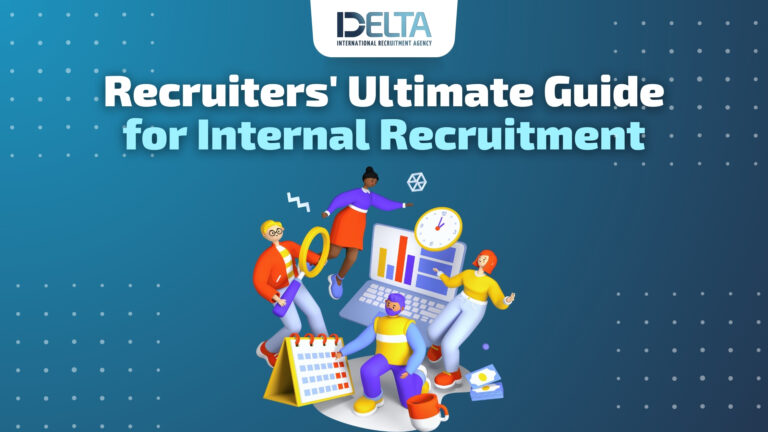To deal with so many people leaving, companies are trying different things like improving rewards and recognition and internal hiring, making work better for employees, and giving higher pay. However, there is still a gap left by those who already left or are planning to leave soon.
One way to fill these openings is by posting them publicly, but that takes a long time, especially when things are changing quickly. That is where the idea of internal hiring comes in. If you are wondering what that means, let us explore it together.
What is Internal Hiring?
Internal hiring means choosing people who already work in your company to fill a job instead of finding new people from outside. Instead of telling everyone about the job in public, you share it with your current employees using company channels. This way, it saves time, resources, and effort compared to hiring from the outside.
1. Shifting from Temporary to Permanent Payroll
This means upgrading an employee from a temporary position to a permanent one. It is like changing someone from an intern to a full-time employee in the same job role or department.
2. Promotions
Internal hiring can also happen through promotions. This is when permanent employees move up to higher roles with more responsibilities and better pay and benefits. It is something employees often look forward to when their career goals match the organization’s goals.
3. Employee Referrals
In this internal Recruitment agency for Romania in Pakistan for method, suitable candidates for a job come from existing employees. HR managers use the professional connections of their current employees to find and hire the best candidates.
4. Transfer
Transfer means moving existing employees to a different work location for a similar job or to another department in their current location for a matching or new role.
Image Source: thebalancemoney.com
Why & When to Consider Internal Hiring?
The answer to this question is still debated among HR and business leaders. Usually, when there is an empty job, companies look for new candidates from outside. While there are many pros to this, I strongly believe there are good reasons to also focus on hiring from within.
You can find someone with experience in different areas who can bring new ideas to the business. However, you should also make sure your business stays true to its core goals that you and your current employees have worked on over the years.
As a responsible business leader, you should give your employees chances to grow and develop their careers within the organization. Trust is also crucial. You trust those who have proven themselves working for the organization and played a key role in its growth.
Now, when should you consider hiring internally?
- Instance 1: If the job needs a lot of inside company knowledge.
- Instance 2: If you have a tight budget for hiring new employees from outside.
- Instance 3: If most employees already have the qualifications for the job.
- Instance 4: if you have, talented and eager people in your current workforce who want to take on the open position.
- Instance 5: When filling the job quickly is crucial and you do not have much time to look for external talent.
Now that you know when to consider it, let us look at the best practices for internal hiring.
Image Source: thehumancapitalhub.com
Internal Hiring Best Practices to Follow
Hiring from within your current team can be tricky if not done right. Making mistakes might lead to losing your best talents. Therefore, here are some best practices to consider when planning hiring internally.
1. Have a Proper SOP for Internal Hiring
Avoid the mistake of giving a role to a chosen employee or someone recommended from the top during internal hiring. This can create resentment and a negative image. Instead, form an internal hiring committee, set rules, and communicate them well. Consider employees’ concerns for policy revisions if needed.
2. Define the Recruitment Strategy
As an HR professional or business leader, you might want fresh talents. However, if qualified people are already in your team, decide whom to prioritize. Clearly define your strategy for attracting, engaging, and retaining the best talents, considering various criteria.
3. Make it Part of Your Employee Learning & Development (L&D) Scheme
Create an internal succession policy aligned with your L&D scheme. Help employee’s upskill and prepare for future roles within the organization.
4. Keep it Transparent and Fair
Ensure everyone has a fair chance with no hidden terms. Use an inter-departmental hiring panel with participants from both employees and management. Evaluate candidates equally based on talent, work experience, and willingness to take on new responsibilities.
5. Encourage Internal Employee Referrals
Use Talent Acquisition Platforms like Applicant Tracking Systems (ATS) for effective employee referral campaigns. Referrals are a great way to find suitable candidates for job roles, both internally and externally. Ask employees for recommendations or notify managers to refer the best candidates from their teams.
Image Source: thehumancapitalhub.com
Pros of Internal Hiring
1. Saves Time
Choosing candidates from your current team to fill a position saves time compared to looking for someone from the outside. It cuts down on the work of advertising the job and going through the process of screening and onboarding external candidates.
2. Helps Retain Experienced Employees
Internal hiring is a good strategy to keep experienced employees from leaving. By offering them a new challenge along with better pay and benefits, you can encourage them to stay with the organization.
3. Keeps Employees Motivated
When employees see the future positions they can achieve within the organization, it motivates them to put in extra effort and work harder.
4. Reduces Training and Hiring Costs
Hiring from within the organization significantly lowers the cost of training and hiring compared to bringing in external candidates. According to a study by the Saratoga Institute, hiring externally can cost 1.7 times more than internal hiring.
Cons of Internal Hiring
1. Hinders Fresh Talent Influx
Internal hiring can prevent new talents from joining the organization, affecting diversity and inclusion goals in the corporate world.
2. Reduces New Ideas and Perspectives
Since employees are hired from within, it may be challenging to bring in fresh ideas or see things differently compared to external candidates.
3. May Impact Workplace Relationships
If an employee is promoted or moved to a better role, it could lead to negative feelings among other team members, affecting overall performance.
Conclusion
This article aims to give you an overview of things to consider when practicing internal hiring in your organization. While it has benefits, don’t overlook the drawbacks. If you decide to implement it, start with a pilot project where the job is open to both internal and external candidates recruitment form agencies. This way, you can see who performs better and make informed decisions.
Tips for Employers: Recruiters’ Ultimate Guide for Internal Hiring




